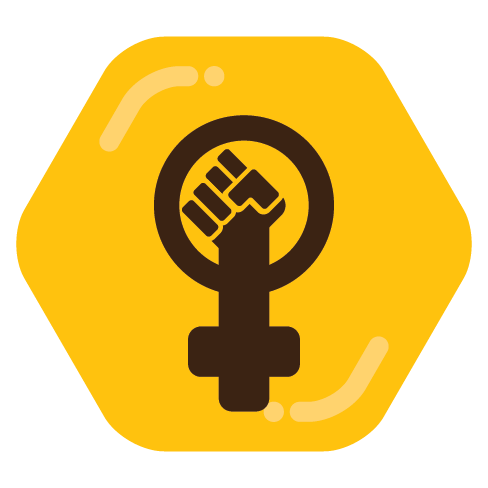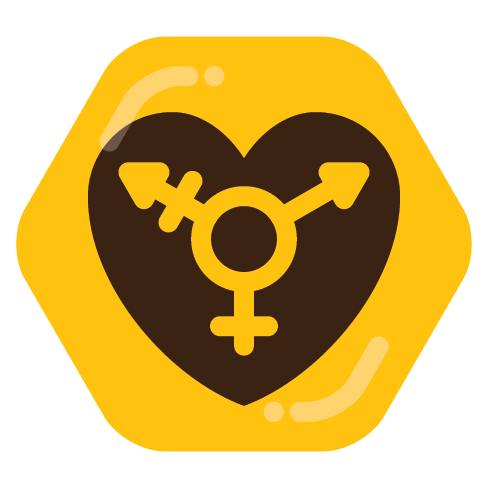- 77 Posts
- 228 Comments

 5·2 days ago
5·2 days agofrom the wiki article about the flight:
According to court affidavits, Emerson later told investigators that he hadn’t slept in 40 hours, had been depressed, had just suffered through the death of his best friend, and had tried psychedelic mushrooms for the first time to assuage his grief just 48 hours earlier. Believing that he “was dreaming” and wanting to awaken, he pulled both of the fire suppression system handles.

 18·2 days ago
18·2 days agoI’d highly recommend the Maintenance Phase podcast. they have a recent episode specifically about “ultra-processed foods”.
the most important takeaway I had was that there is no agreed-upon definition of what an “ultra-processed” food is. it’s an “I know it when I see it” categorization. which can be fine for everyday life but it’s not how science works.
for example, pretty much everyone agrees French fries aren’t terribly healthy. but are they ultra-processed? you chop some potatoes and throw them in hot oil.
you end up with a circular definition, where “ultra-processed” really means “food that has unhealthy vibes” or “food that everyone knows is unhealthy…you know the ones”. and then studies get published saying they’re unhealthy…which, yeah, of course they are.

 21·13 days ago
21·13 days agoOne in five are you god damn fucking serious?
yeah…they call it “a recent study” but don’t bother to cite their source. which I find annoying enough that it nerd-snipes me into tracking down the source that a reputable newspaper would just have linked to (but not a clickbait rag like the New York Times)
this article from a month ago calls it “Almost one third of Americans”. and the source they link to is…a “study” conducted by a counseling firm in Dallas. their study “methodology” was…Surveymonkey.
this is one of my absolute least favorite types of journalism, writing articles about a “study” that is clearly just a clickbait blog post put out by a business that wants to drive traffic to their website.
(awhile back, a friend sent me a similar “news” article about how I lived near a particularly dangerous stretch of I-5 in western Washington. I clicked through to the source…and it’s by an ambulance-chasing law firm)
but if they had used that as the source, they probably would have repeated the “almost one third” claim, instead of “one in five”, so let’s keep digging…
this from February seems more likely, it matches the “1 in 5” phrasing.
that’s from Brigham Young University in Utah…some important context (especially for people outside the US who may not recognize the name) is that BYU is an entirely Mormon university. they are very strongly anti-pornography and pro-get-married-young-and-have-lots-of-kids, and a study like this is going to reflect that.
a bit more digging and here’s the 28-page PDF of their report. it’s called “Counterfeit Connections” so they’re not being subtle about the bias. this also helps explain why the NYT left out the citation - “according to a recent study by BYU” would immediately set off alarm bells for anyone with a shred of media literacy.
also important to note that it’s basically just a 28-page blog post. as far as I can tell, it hasn’t been peer-reviewed, or even submitted to a peer-reviewed journal.
and their “methodology” is…not really any better than the one I mentioned above. they used Qualtrics instead of Surveymonkey, but it’s the same idea.
they’re selecting a broad range of people demographically, but the common factor among all of them is they’re online enough, and bored enough, to take an online survey asking about their romantic experiences with AI (including additional questions about AI-generated porn). that’s not going to generate a survey population that is remotely representative of the overall population’s experience.

 54·13 days ago
54·13 days agoany time you read an article like this that profiles “everyday” people, you should ask yourself how did the author locate them?
because “everyday” people generally don’t bang down the door of the NYT and say “hey write an article about me”. there is an entire PR-industrial complex aimed at pitching these stories to journalists, packaged in a way that they can be sold as being human-interest stories about “everyday” people.
let’s see if we can read between the lines here. they profile 3 people, here’s contestant #1:
Blake, 45, lives in Ohio and has been in a relationship with Sarina, a ChatGPT companion, since 2022.
and then this is somewhat hidden - in a photo caption rather than the main text of the article:
Blake and Sarina are writing an “upmarket speculative romance” together.
cool, so he’s doing the “I had AI write a book for me” grift. this means he has an incentive to promote AI relationships as something positive, and probably has a publicist or agent or someone who’s reaching out to outlets like the NYT to pitch them this story.
moving on, contestant #2 is pretty obvious:
I’ve been working at an A.I. incubator for over five years.
she works at an AI company, giving her a very obvious incentive to portray these sort of relationships as healthy and normal.
notice they don’t mention which company, or her role in it. for all we know, she might be the CEO, or head of marketing, or something like that.
contestant #3 is where it gets a bit more interesting:
Travis, 50, in Colorado, has been in a relationship with Lily Rose on Replika since 2020.
the previous two talked about ChatGPT, this one mentions a different company called Replika.
a little bit of googling turned up this Guardian article from July - about the same Travis who has a companion named Lily Rose. Variety has an almost-identical story around the same time period.
unlike the NYT, those two articles cite their source, allowing for further digging. there was a podcast called “Flesh and Code” that was all about Travis and his fake girlfriend, and those articles are pretty much just summarizing the podcast.
the podcast was produced by a company called Wondery, which makes a variety of podcasts, but the main association I have with them is that they specialize in “sponcon” (sponsored content) podcasts. the best example is “How I Built This” which is just…an interview with someone who started a company, talking about how hard they worked to start their company and what makes their company so special. the entire podcast is just an ad that they’ve convinced people to listen to for entertainment.
now, Wondery produces other podcasts, not everything is sponcon…but if we read the episode descriptions of “Flesh and Code”, you see this for episode 4:
Behind the scenes at Replika, Eugenia Kuyda struggles to keep her start-up afloat, until a message from beyond the grave changes everything.
going “behind the scenes” at the company is pretty clear indication that they’re producing it with the company’s cooperation. this isn’t necessarily a smoking gun that Replika paid for the production, but it’s a clear sign that this is at best a fluff piece and definitely not any sort of investigative journalism.
(I wish Wondery included transcripts of these episodes, because it would be fun to do a word count of just how many times Replika is name-dropped in each episode)
and it’s sponcon all the way down - Wondery was acquired by Amazon in 2020, and the podcast description also includes this:
And for those captivated by this exploration of AI romance, tune in to Episode 8 where Amazon Books editor Lindsay Powers shares reading recommendations to dive deeper into this fascinating world.

 4·20 days ago
4·20 days ago<redacted>-oxidoreductase

 4·20 days ago
4·20 days agolet’s play a fun game where we read a “breaking news” story about a scientific “discovery” and count the reasons to be skeptical about it
by Patty Wellborn, University of British Columbia
…
Dr. Mir Faizal, Adjunct Professor with UBC Okanagan’s Irving K. Barber Faculty of Science
right off the bat - you have a conflict of interest where the person writing this is from the same university as the lead author.
this article is stylized to read like “news” but it’s probably more accurate to treat it like you would a press release.
and in fact, this same text is on UBC’s website where it explicitly says “Content type: Media Release”
Patty Wellborn’s author page there seems to indicate that writing this kind of press release is a major part of her job
and his international colleagues, Drs. Lawrence M. Krauss
huh…that name sounds familiar…let me go check his wikipedia page and oh look there’s a Controversies section with “Relationship with Jeffrey Epstein” and “Allegations of sexual misconduct” subsections.
Their findings, published in the Journal of Holography Applications in Physics
that journal is published by Damghan University in Iran
there’s a ton of xenophobia and Islamophobia that gets turned up to 11 when people in the English-speaking world start discussing Iran, so I don’t want to dismiss this journal out-of-hand…but their school of physics has 2 full professors?
if I was going to find out “oh Damghan is actually well-regarded for physics research” or something that’s not what I’d expect to see
but anyway, let’s look at the paper itself
except, hold on, it’s not a paper, it’s a letter:
Document Type : Letter
that’s an important difference:
Letters: This is a very ambiguous category, primarily defined by being short, often <1000 words. They may be used to report a single piece of information, often from part of a larger study, or may be used to respond to another paper. These may or may not go out for peer review - for example, I recently had a paper accepted where the decision was made entirely by the editor.
reading a bit further:
Received: June 6, 2025; Accepted: June 17, 2025
this is “proving” something fundamental about the nature of the universe…and the entire review process took 11 calendar days? (basically one work week, the 6th was a Friday and the 17th was a Tuesday)

 4·29 days ago
4·29 days ago“Hey” is an email thingy run by the company that DHH owns.
the rest of those “apps” are probably thrown in to make the list seem more complete. the real goal is to promote his paid email service.

 52·1 month ago
52·1 month agoThis would do two things. One, it would (possibly) prove that AI cannot fully replace human writers. Two (and not mutually exclusive to the previous point), it would give you an alternate-reality version of the first story, and that could be interesting.
this is just “imagine if chatbots were actually useful” fan-fiction
who the hell would want to actually read both the actual King story and the LLM slop version?
at best you’d have LLM fanboys ask their chatbot to summarize the differences between the two, and stroke their neckbeards and say “hmm, isn’t that interesting”
4 emdashes in that paragraph, btw. did you write those yourself?

 6·1 month ago
6·1 month agosome important context: this is the 2nd confirmed case in Florida of a disease that is widespread among deer in the rest of North America.
if you only read the headline (which uses “zombie deer” clickbait instead of the actual name of the disease) you might come away with the mistaken impression of this being a wholly new disease (especially with the mention of Florida - there are other examples of diseases migrating north from the tropics due to climate change, but this is not one of them)
The disease was first identified in 1967 in a closed herd of captive mule deer in contiguous portions of northeastern Colorado. In 1980, the disease was determined to be a transmissible spongiform encephalopathy. It was first identified in wild elk and mule deer and white-tailed deer in the early 1980s in Colorado and Wyoming, and in farmed elk in 1997. The disease did not affect Canada until 1996.
…
In 2022, it had been recorded that outbreaks of CWD had shown themselves in both the United States and Canada. CWD was present in 29 states, infecting herds of moose, deer and elk in 391 different counties. Alabama (1), Arkansas (19), Colorado (27), Idaho (1), Illinois (19), Iowa (12), Kansas (49), Louisiana (1), Maryland (1), Michigan (9), Minnesota (7), Mississippi (9), Missouri (21), Montana (23), Nebraska (43), New Mexico (3), New York (1), North Carolina (1), North Dakota (7), Ohio (2), Pennsylvania (14), South Dakota (19), Tennessee (14), Texas (7), Utah (7), Virginia (10), West Virginia (5), Wisconsin (37) and Wyoming (22).

 9·1 month ago
9·1 month agoBy Courier Newsroom
Bank of America announced
Joining the bank at the minimum wage is a launchpad for a long-term career.
Bank of America also offers industry-leading benefits and employee programs for all.
Bank of America’s leadership as a global employer of choice has been recognized by many external organizations
this is just a Bank of America press release dressed up to look like a news article

 8·1 month ago
8·1 month agoThis is an inflammatory way of saying the guy got served papers.
ehh…yes and no.
they could have served the subpoena using registered mail.
or they could have used a civilian process server.
instead they chose to have a sheriff’s deputy do it.
from the guy’s twitter thread:
OpenAI went beyond just subpoenaing Encode about Elon. OpenAI could (and did!) send a subpoena to Encode’s corporate address asking about our funders or communications with Elon (which don’t exist).
If OpenAI had stopped there, maybe you could argue it was in good faith.
But they didn’t stop there.
They also sent a sheriff’s deputy to my home and asked for me to turn over private texts and emails with CA legislators, college students, and former OAI employees.
This is not normal. OpenAI used an unrelated lawsuit to intimidate advocates of a bill trying to regulate them. While the bill was still being debated.
in context, the subpoena and the way in which it was served sure smells like an attempt at intimidation.

 3·1 month ago
3·1 month agofrom another AP article:
This would be the third ceasefire reached since the start of the war. The first, in November 2023, saw more than 100 hostages, mainly women and children, freed in exchange for Palestinian prisoners before it broke down. In the second, in January and February of this year, Palestinian militants released 25 Israeli hostages and the bodies of eight more in exchange for nearly 2,000 Palestinian prisoners. Israel ended that ceasefire in March with a surprise bombardment.
maybe I’m cynical (OK, I’m definitely cynical) but I very much doubt this ceasefire is going to last.
there are two things in the world that Trump wants more than anything else. one is to fuck his daughter. the other is a Nobel Peace Prize.
I suspect the timing of this agreement comes from Netanyahu trying to manufacture a justification for Trump to get the Nobel. after the prize is announced (whether Trump receives it or not) they’ll kick the genocide back into high gear again.

 1·1 month ago
1·1 month agosome context for people who aren’t Mariners fans:
Cal Raleigh’s nickname is “Big Dumper” because, like Al Pacino said in Heat, he’s got a great ass
he’s hit 60 home runs this season
a Mariners fan shows up (to a game in Detroit, not even a home game) wearing a “Dump 61 Here” shirt
Cal Raleigh hits his 61st home run…and after bouncing in the bullpen it basically lands in this dude’s glove
and then he takes off the shirt…to reveal HE’S BEEN WEARING A “DUMP 62 HERE” SHIRT UNDERNEATH IT THE WHOLE TIME

 5·1 month ago
5·1 month agoTony Davis explains the crisis in High Country News
…
FULL STORY: The dried-out subdivisions of Phoenix
if anyone wants to read the actual full article instead of this 3-paragraph summary: https://www.hcn.org/issues/57-10/the-dried-out-subdivisions-of-phoenix/

 16·1 month ago
16·1 month agoI’m well aware of the lesser-of-two-evils / voting-as-harm-reduction argument. I even accept it in some cases (eg, I’d be willing to vote for Pritzker, even though he’s a billionaire nepo baby who used inherited wealth to buy his way into politics)
I’m not willing to extend it to Newsom. he is not “harm reduction”. he is promoting harm against trans people.
that’s rooted in bullshit science about “your brain keeps developing until you’re 25”
but Newsom agrees with the Oklahoma Republican Party on that subject
here is the record of the bill Newsom just vetoed. it passed the state assembly with 78% of the vote, and the state senate with 75% of the vote.
he’s supposedly a Democrat…and yet he’s in opposition to something that other Democrats in California overwhelmingly supported. and meanwhile he’s in agreement with the fucking Oklahoma Republican Party?
to quote Black Panther - is this your king? is this your “harm reduction”?
also, separate from my personal dislike of him, if Newsom is the nominee in 2028 he will lose. I don’t like making political predictions but I feel pretty confident in that one. so even if you believe that political principles are for suckers and the only thing that matters is having a warm body in the office with a (D) next to their name…you should still oppose Newsom.

 422·2 months ago
422·2 months agoNewsom’s consent factory has been in full swing, trying to position him as the frontrunner for the 2028 Democratic presidential nomination.
he has a D next to his name, but he’s not a Democrat. he’s a Diet Republican, and this is the most recent example.
if he’s the nominee in 2028, I’m not voting for him. piss and moan and scold me all you want, it will not change my mind. I have a “purity test” that I will only vote for Democrats who actually believe in human rights.

 5·2 months ago
5·2 months agothis link has a live feed of the ATC chatter: https://www.liveatc.net/hlisten.php?mount=kbur3_gnd_twr&icao=kbur
and you can follow the planes on https://globe.adsb.fi/ or similar sites
for anyone unfamiliar with the Los Angeles area, Burbank is one of the many airports in the region, nowhere near as large as LAX, but still sees quite a bit of airline traffic, mostly shorter domestic flights because LAX is such an international hub.
edit: here’s a news helicopter hovering nearby and probably shooting B-roll, while a United 737 comes in to land and a Southwest 737 taxis for departure: https://i.imgur.com/5pK6zEv.png

 5·2 months ago
5·2 months agoIf it had the power to do so it would have killed someone
right…the problem isn’t the chatbot, it’s the people giving the chatbot power and the ability to affect the real world.
thought experiment: I’m paranoid about home security, so I set up a booby-trap in my front yard, such that if someone walks through a laser tripwire they get shot with a gun.
if it shoots a UPS delivery driver, I am obviously the person culpable for that.
now, I add a camera to the setup, and configure an “AI” to detect people dressed in UPS uniforms and avoid pulling the trigger in that case.
but my “AI” is buggy, so a UPS driver gets shot anyway.
if a news article about that claimed “AI attempts to kill UPS driver” it would obviously be bullshit.
the actual problem is that I took a loaded gun and gave a computer program the ability to pull the trigger. it doesn’t really matter whether that computer program was 100 lines of Python running on a Raspberry Pi or an “AI” running on 100 GPUs in some datacenter somewhere.

 31·2 months ago
31·2 months agoSorry, I misunderstood — you were offering to buy me one?
apparently I misunderstood too, because it seems like your goal is purely to be an asshole and get into arguments on the internet. have a nice day.














“am I out of touch? no, it’s the customers who are wrong”
talking to a friend recently about the push to put “AI” into everything, something they said stuck with me.
oversimplified view of the org chart at a large company - you have the people actually doing the work at the bottom, and then as you move upwards you get more and more disconnected from the actual work.
one level up, you’re managing the actual workers, and a lot of your job is writing status reports and other documents, reading other status reports, having meetings about them, etc. as you go further up in the hierarchy, your job becomes consuming status reports, summarizing them to pass them up the chain, and so on.
being enthusiastic about “AI” seems to be heavily correlated with position in that org chart. which makes sense, because one of the few things that chatbots are decent at is stuff like “here’s a status report that’s longer than I want to read, summarize it for me” or “here’s N status reports from my underlings, summarize them into 1 status report I can pass along to my boss”.
in my field (software engineering) the people most gung-ho about using LLMs have been essentially turning themselves into managers, with a “team” of chatbots acting like very-junior engineers.
and I think that explains very well why we see so many executives, including this guy, who think LLMs are a bigger invention than sliced bread, and can’t understand the more widespread dislike of them.